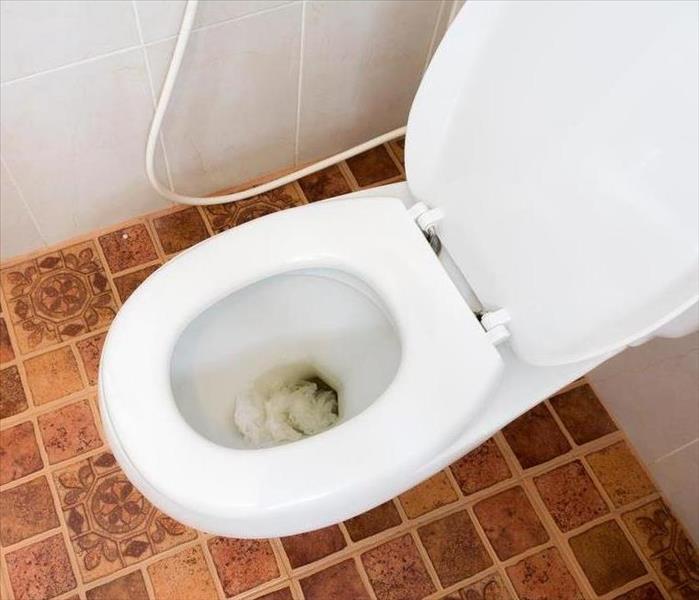Everything You Need to Know about an Overflowing Toilet
11/2/2022 (Permalink)
 If you have a clogged toilet and it overflows then you need to take some immediate steps to avoid further damage.
If you have a clogged toilet and it overflows then you need to take some immediate steps to avoid further damage.
Everything You Need to Know about an Overflowing Toilet
If you have a clogged toilet and it overflows in your Haines City, FL home, then you need to take some immediate steps to avoid further damage. You can fix this at home with a plunger or auger but first, let’s understand why toilets overflow in the first place. In this blog, we will discuss the basics of an overflowing toilet, how to stop it, and how to fix it (if necessary).
Toilet Overflow Basics
A toilet bowl overflow occurs when water flows past the trap seal in your bathroom and goes into the floor drain instead of back into the tank of your commode. The most common causes of this problem are clogs or poor sealant around the bottom of your waste pipe. These can be caused by old age, loose connections between pipes under your bathroom flooring, or even foreign objects such as toys that were flushed down toilets accidentally by children playing in the bathroom. Regardless of how it happened though, if it still hasn't been fixed by now then you probably need professional help.
How to Stop It
Start by shutting off the water supply valve and flush the toilet. Check if the water has stopped flowing, then remove any wet or soiled items from around your toilet and bathroom floor as soon as possible (if you're not sure what type of carpeting you have, test a small area by rubbing some soapy water on it; if it's latex-backed, you can blot up most spills with paper towels).
If the water has not yet overflowed from the bowl, use a sponge or rags to soak up as much of it as possible. If you do not have a bucket handy, consider using a towel or rag to catch any remaining water. While this method is less effective and messier than using a bucket/mop, it's better than nothing if a suitable container isn't available.
Do not touch the water with your bare hands! If there is any doubt about whether or not the toilet overflow was caused by an overflowing toilet bowl rather than an overflowing drain line (see Section 1), you should wear gloves when handling anything wet in order to avoid coming into contact with fecal matter—which could lead to infection if ingested.
If the overflow is caused by a clogged toilet, try plunging it to unclog any blockages that are caught in the trap way below. To do this, place your plunger into the bowl of water and push down on one side of it until you feel it start to seal against the surface of the drain. Then, pull up slightly and press down again. Repeat these steps until water no longer flows out through your sink or bathtub faucet.
If your plunger does not clear the blockage, you may need to use a toilet auger to clear the blockage causing the overflow. The auger will be able to reach further into the trap way than a plunger can!
If you've followed these steps and your toilet is still overflowing, it might be time to call a SERVPRO of Haines City/Polk City. Don't wait until tomorrow, call us today!





 24/7 Emergency Service
24/7 Emergency Service